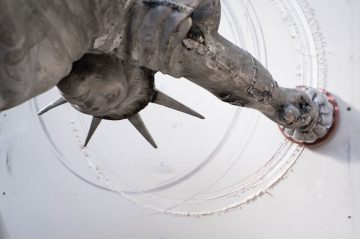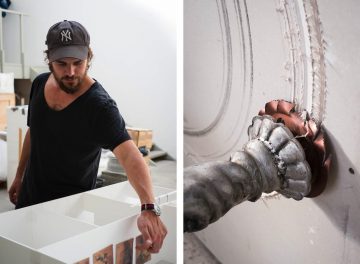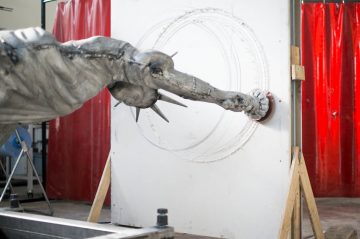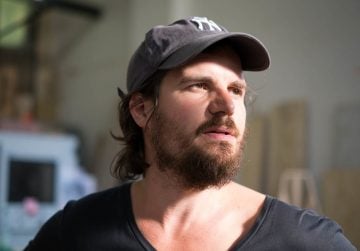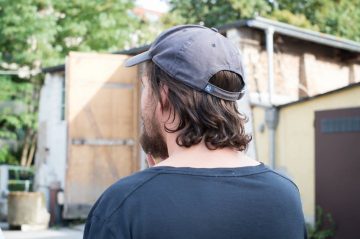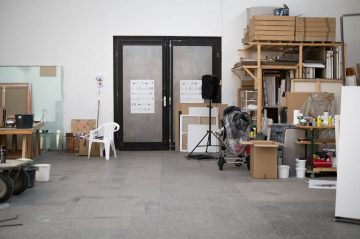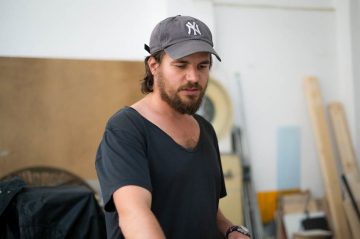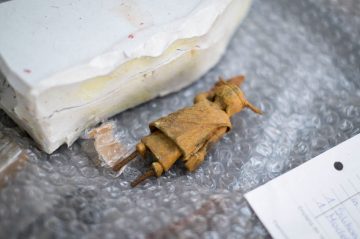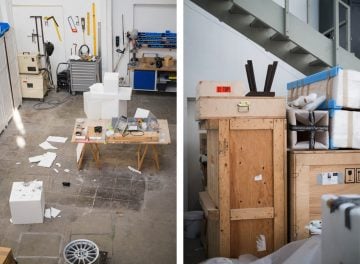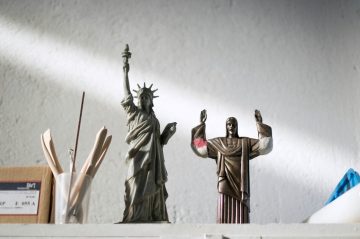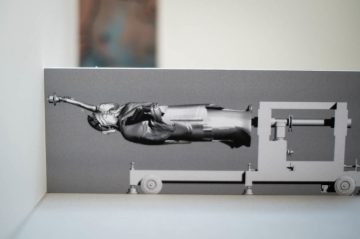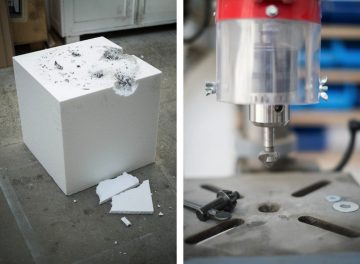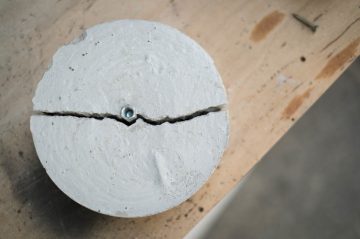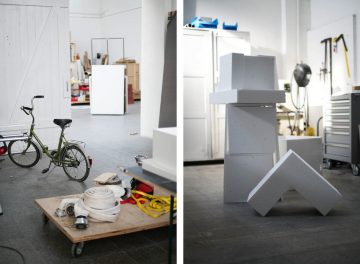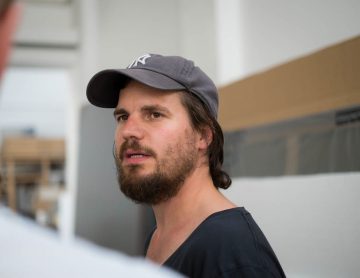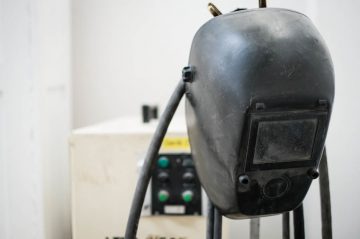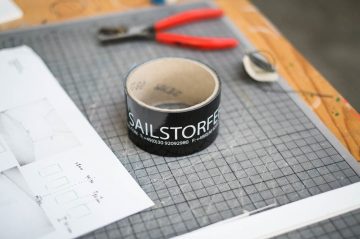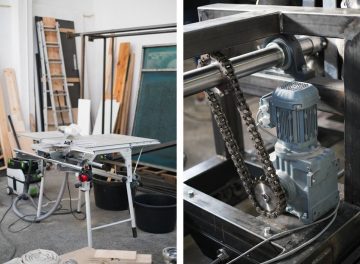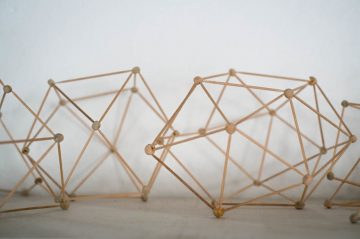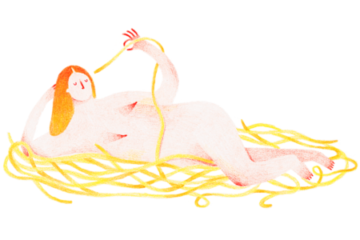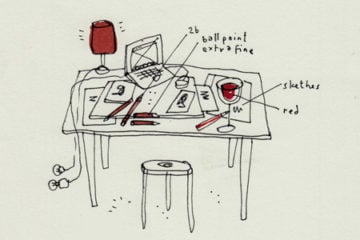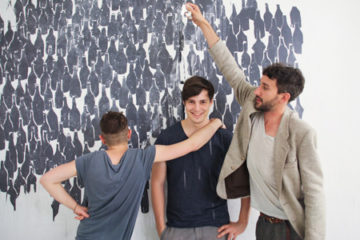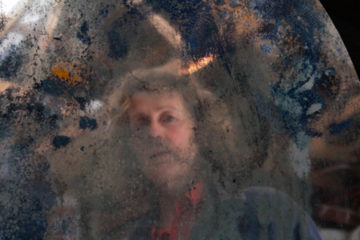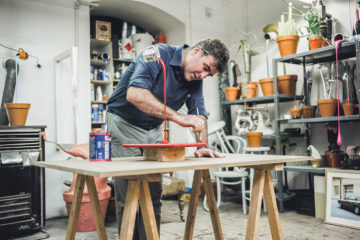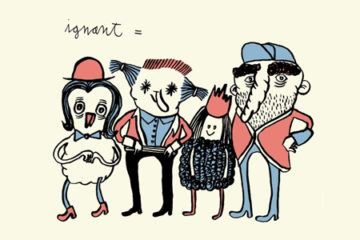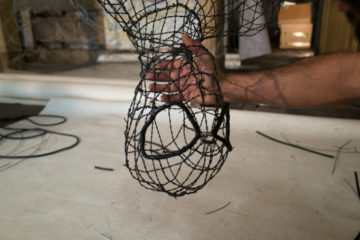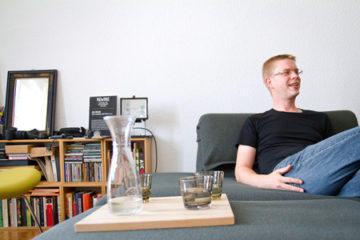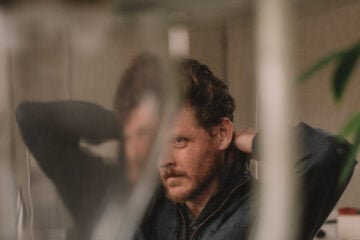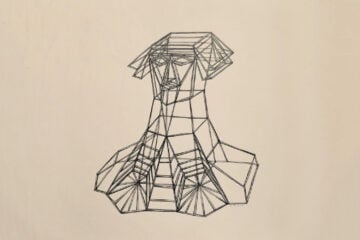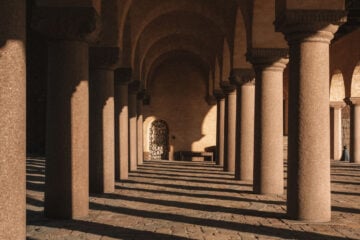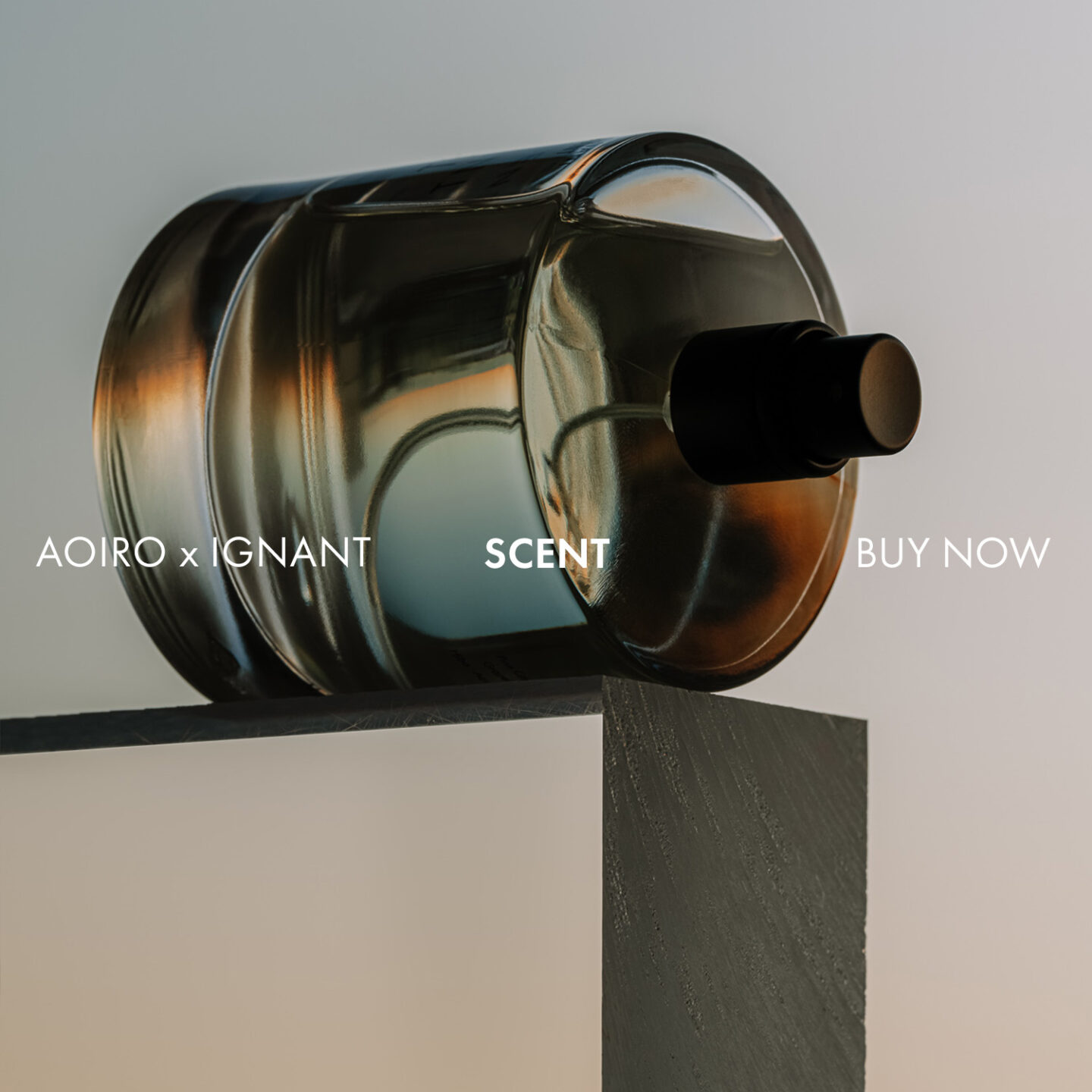Michael Sailstorfer
- Words
- Caroline Kurze
Michael Sailstorfer is especially interested in how his work and the surrounding are put in interaction with one-another. He finds the small things of everyday life, mundane things that catch your attention whilst passing by, inspiring. He deconstructs, recombines, alienates objects and puts them back together, creating a whole new structure.
+ Read MoreA police car becomes a drum set, an airplane a treehouse. Trees turn into rockets swirling through the air and a forest transforms into dancers in a room.
We visited Michael Sailstorfer at his studio before the abc where he exhibited a piece of work called ‘Mückenhaus’. The ‘Mückenhaus’ is a structure in a shape of a house covered in mosquito net. As soon as the day ends and the sun sets, mosquitos will be drawn to the light of the street lamp, over which the ‘Mückenhaus’ is installed, and the sculpture will ‘accommodate’ mosquitos and other insects.
His recently created ‘Mazes’ are made out of copper painted canvases and have different maze patterns printed on them. Using an acidic solution, Sailstorfer tries to find a way through each of the mazes by pouring the solution on to the canvas, referring to Andy Warhol’s ‘Oxidation paintings’. These works are being exhibited Galerie Perrotin in Paris until the 9th of November. He likes the idea of having to find a way through a maze, having to make supposedly right or wrong decisions and by that creating a unique piece of art.
Apart from the ‘Mazes’ a 2.5m large Statue of Liberty will be exhibited. Sailstorfer remodeled the statue, so that instead of holding a torch, guiding and welcoming travelers from afar, now are two rotating blades that will be drilling their way through a gallery wall for the duration of the exhibition. ‘This Statue of Liberty has been standing around in my studio for some time now. I discovered her on my way from Berlin to the countryside in Brandenburg at a place that sells second hand construction materials. They had this 2,5m tall aluminum cast of the Statue of Liberty in their garden next to fragments of soviet monuments, old bathtubs and parts of the Berlin wall. Now I return the statue of Liberty in a more or less symbolic act back to France, who gave it to the United States as gift. By doing this I don’t necessarily want to question or query the connects iconic image, but try to fathom how else this iconic image or the word ‘Freedom’ can be used and what connections can be made.
His works are often site-specific and have a component fiddly jobs and DIY, for example the drumset made of an old police car. Is first works are forms in small wood next to his fathers house. In his work ‘Waldputz’ he creates an artificial area in the woods by ‘cleaning up’ a natural space. His works often bear something poetic, a reflective part and a bit of humor. Sailstorfer’s installation ‘Solarkatzen’ consist of 15 cats on 5.50m high steels staring into neon lamps. He creates a mediative mood and adds a second level to the exhibition space. The relatively recent work ‘Antiherbst’ is a body of work, in which the artist collects fallen leaves from a tree and pins them back onto the branches, as a part of EMSCHERKUNST.13 that will begin in October. Michael Sailstorfer manages to create works of concentrated poetic power by questioning the traditional concept of sculptures and connecting and transforming objects .
A detailed interview and some more pictures can be found over at Castor und Pollux.
Images by Caroline Kurze Text by Hannah Edwards
